#Antiquities preservation
Explore tagged Tumblr posts
Text

Remembering,
Khaled al-Asaad 'Mr Palmyra'
Cause of death : Decapitation
In May 2015, modern Palmyra and the adjacent ancient city came under the control of the Islamic State. Al-Asaad helped evacuate the city museum prior to the Islamic State's takeover, but was himself captured by the terrorist organisation. The Islamic State then tortured al-Asaad in an attempt to discover the location of the ancient artifacts that he helped hide. He was murdered in Palmyra on 18 August 2015 at the age of eighty-three.
The New York Times reported:
After detaining him for weeks, the jihadists dragged him on Tuesday to a public square where a masked swordsman cut off his head in front of a crowd, Mr. Asaad's relatives said. His blood-soaked body was then suspended with red twine by its wrists from a traffic light, his head resting on the ground between his feet, his glasses still on, according to a photo distributed on social media by Islamic State supporters.
In February 2021, Syrian state sources reported the discovery of al-Asaad's body in the countryside 10 km east of Palmyra.[22]
Along with al-Asaad, Qassem Abdullah Yehya, the deputy director of the DGAM Laboratories, also protected the Palmyra site, and was murdered by the Islamic State while on duty on 12 August 2015. He was thirty-seven years old
"he had a degree in history from Damascus University, he had no formal training in archaeology - all his knowledge in this field was self-taught."
"When you look at Palmyra today as an archaeological site, really that's the legacy of Khaled al-Asaad," Mr Azm says.
Here, you can read about the antiquties of Palmyra
This is the source I found so far, with details and colored pictures about his work and legacy
Al-Assad was one of the few people on Earth who was fluent in the language of ancient Palmyrian. By the end of his career, he had translated over 3000 lines of text. In addition, he taught himself English to be able to communicate with visitors and scholars interested in the area.
#Khaled al-Asaad#Palmyra#Archaeology#Ancient Syria#Syrian Civil War#Cultural heritage#Antiquities preservation#ISIS#Cultural destruction#Heritage protection#Palmyrene art#UNESCO World Heritage#Roman history#Ancient trade routes#Archaeological hero#Syrian history#Archaeological sites#Cultural resistance#Palmyra temples#Syrian archaeologist#Palmyra ruins#Ancient Middle East#Baalshamin Temple#Palmyra monuments#Zenobia#Roman Empire#Syrian heritage#Heritage conservation#Archaeological excavation#ISIS war crimes
1 note
·
View note
Text

You find these two in a box in your attic, wyd?
I had a lot of fun scribbling on these guys!! there's a whole lot of texture going on hehe >:3c As always, close ups under cut!


#fnaf#fnaf sb#fnaf security breach#fnaf sun moon#fnaf daycare attendant#dca fandom#fnaf sundrop#fnaf moondrop#fan art#harlequin#clowns#antiques#artists on tumblr#digital art#my art#These are based on a couple of porcelain harlequins I've had since i was kid!! I've wanted to draw the dca in this style for so long ;w;#some of the ones i have have lost their bells over time but i couldn't bring myself to do that to the boys >.<#so they're just in really good condition!!! preserved w love :nods:
647 notes
·
View notes
Text

Bunches of herbs and flowers hanging from a length of rough twine festoon a kitchen hearth. In the country, kitchen decoration grows naturally from the activities of cooking, preserving and preparing food.
Traditional Country Style, 1991
#vintage#interior design#home#vintage interior#architecture#home decor#style#1990s#90s#kitchen#living room#fireplace#dried herbs#country#rustic#pantry#painting#antique#traditional#preserves
310 notes
·
View notes
Text


#vintage#vintage aesthetic#antique#antique aesthetic#jars#preserves#cottage#cottagecore#cottage aesthetic#grandmacore#grandma aesthetic
438 notes
·
View notes
Text

Tim Campbell
* * * *
LETTERS FROM AN AMERICAN
January 7, 2025
Heather Cox Richardson
Jan 08, 2025
Today, President Joe Biden signed proclamations that create the Chuckwalla National Monument and the Sáttítla Highlands National Monument, protecting 848,000 acres (about 3,430 square kilometers) of land in southern California’s Eastern Coachella Valley. Under the 1906 Antiquities Act, the president can designate national monuments to protect areas of “scientific, cultural, ecological, and historic importance.”
Yesterday, Biden protected the East Coast, the West Coast, the eastern Gulf of Mexico, and Alaska’s Northern Bering Sea—an area that makes up about 625 million acres or 2.5 million square kilometers—from oil and natural gas drilling. While there is currently little interest among oil companies in drilling in those areas, the new designation will protect them into the future. Noting that nearly 40% of Americans live in coastal communities, Biden said the minimal fossil fuel potential was not worth the risks that drilling would bring to the fishing and tourist industries and to environmental and public health.
The White House noted that Biden and Vice President Kamala Harris have “conserved more lands and waters”—more than 670 million acres of them—and have “deployed more clean energy, and made more progress in cutting climate pollution and advancing environmental justice than any previous administration.” At the same time, oil and gas production is at an all-time high, demonstrating that land protection and energy production can coexist.
While oil executives blasted Biden’s proclamation protecting the coastal waters, Democratic lawmakers on the newly protected coasts cheered his action, recognizing that oil spills devastate the tourism and fishing on which their constituents depend: the 2010 Deepwater Horizon oil spill in the Gulf of Mexico, for example, killed 11 people, closed 32,000 square miles (82,880 square kilometers) of the Gulf of Mexico to fishing, and has cost more than $65 billion in compensation alone.
Biden protected the oceans under the 1953 Outer Continental Shelf Lands Act, which enables presidents to withdraw federal waters from future oil and gas leasing and development but does not say that future presidents can revoke that protection to put those waters back into development, meaning that Trump—who similarly protected coastal waters when he was president—will have a hard time overturning Biden’s action.
Nonetheless, Trump’s spokesperson Karoline Leavitt called Biden’s decision “disgraceful” and claimed it was “designed to exact political revenge on the American people who gave President Trump a mandate to increase drilling and lower gas prices. Rest assured, Joe Biden will fail, and we will drill, baby, drill.”
Journalist Wes Siler, who writes about the outdoors, environment, and the law, notes that there is a major effort underway among Republicans to privatize public lands to benefit oil and gas industries, as well as other extractive industries, just as Project 2025 outlined. Melinda Taylor, senior lecturer at the University of Texas at Austin Law School, told Bloomberg Law in November: “Project 2025 is a ‘wish list’ for the oil and gas and mining industries and private developers. It promotes opening up more of our federal land to energy development, rolling back protections on federal lands, and selling off more land to private developers.”
In September, Siler wrote in Outside that politicians in Utah have designed a lawsuit to put in front of the Supreme Court. It argues that all the land in Utah currently in the hands of the Bureau of Land Management—18.5 million acres—should be transferred to the control of the state of Utah.
Those eager to get their hands on the land use the words “unappropriated lands” from the 1862 Homestead Act to claim that the federal government is holding the land “without any designated purpose.”
But, as Siler notes, in 2023, BLM-managed land supported 783,000 jobs and produced $201 billion in economic output, and in Utah alone the use of BLM land created more than 36,000 jobs and $6.7 billion in economic output as more than 15 million people visited the state’s public lands. Utah realized hundreds of millions of dollars in taxes on that activity, and while it’s true that states cannot tax federal government lands—as lawmakers say—the government pays the state in lieu of taxes: $128.7 million in 2021.
Transferring that land to the state would sacrifice these funds, and because the state constitution requires the state both to balance its budget and to realize profits from state land, that transfer would facilitate the land’s sale to private interests.
Twelve states have now joined Utah’s lawsuit, arguing that federal control of “unappropriated” land within states impinges on state sovereignty, and they are asking the Supreme Court to take up the case as part of its original jurisdiction. As Siler noted in a May article in Outside, Chief Justice John Roberts has expressed an eagerness to revisit the legality of the Antiquities Act the presidents use to protect land—as Biden did today—suggesting he would be willing to side with the states against the federal government. Project 2025 also calls for Congress to repeal the Antiquities Act.
In Wes Siler’s Newsletter yesterday, Siler noted that the new rules package adopted for the 119th Congress makes it easier to transfer public lands to state control. The rules strip away the need to justify the cost of such a transfer and to offset it with budget cuts or increased revenue elsewhere.
In a press conference today, Trump said he would rescind Biden’s policies and “put it back on day one,” and complained that the 625 million acres Biden protected feels “like the whole ocean,” although the Pacific Ocean alone is almost 38 billion acres more than Biden protected.
Also today, Trump announced that a developer from Dubai, DAMAC Properties, will invest at least $20 billion in the U.S. to create new data centers that support artificial intelligence and cloud services. Trump claimed that the company’s chief executive officer, Hussain Sajwani, is investing in the U.S. “because of the fact that he was very inspired by the election,” but DAMAC has been connected to Trump for a while.
Sajwani attended Trump’s first inauguration, and a company tied to chair and current board member of DAMAC Farooq Arjomand paid $600,000 to the key witness for the House Republicans seeking to dig up dirt on President Biden. That man was Alexander Smirnov, who in December 2024 pleaded guilty to lying to the FBI when he claimed Biden had taken bribes from the Ukrainian company Burisma.
Data centers are notoriously high users of energy. They consume 10 to 50 times as much energy per floor space as does a typical commercial office building, which might have something to do with why Trump’s team is so eager to increase American energy production even as it is already at an all-time high. Trump has promised companies that invest a billion or more dollars in the U.S. that they will get expedited approvals and permits, including those covering environmental concerns.
But if the larger story of this moment is the plunder of our public resources for private interests, Trump’s press conference in general seemed to have a different theme. It was what CNN perhaps euphemistically called “wide ranging,” as he abandoned his “America First” isolationism to suggest using force against China as well as U.S. allies Denmark, Panama, Mexico, and Canada, which would destabilize the globe by rejecting the central principle of the North Atlantic Treaty Organization (NATO) that countries must respect each other’s sovereignty. He wildly suggested that the Iran-backed Lebanese paramilitary group Hezbollah was part of the January 6, 2021, attack on the U.S. Capitol and that his people were part of the negotiations for the return of the Israeli hostages.
Trump’s performance was reminiscent of his off-the-wall press conferences during the worst of the coronavirus pandemic, which tanked his popularity enough to get his team to stop him from doing them. Trump might have chosen to speak today to keep attention away from the arrival of the casket carrying former president Jimmy Carter to Washington, D.C., where it was transported by horse-drawn caisson to the Capitol, where Carter will lie in state in the Rotunda until his Thursday funeral at Washington National Cathedral. The snow and frigid weather were not enough to keep mourners away, and Trump has already expressed frustration that Carter’s death will mean that flags will be at half-staff for his own inauguration.
But he also might have been trying to demonstrate that the transition from Biden’s administration to his own is taking his time and energy in order to add heft to the argument his lawyers made yesterday. They demanded that Attorney General Merrick Garland prevent the public release of special counsel Jack Smith’s report about his investigation into Trump’s attempt to overturn the results of the 2020 presidential election because making Trump respond to the media frenzy the report will stir up would take his attention away from the presidential transition.
Trump managed to defang most of the legal cases against him by being elected president, but he apparently still fears the release of Smith’s report. Today, Judge Aileen Cannon, whom he appointed to the bench and who dismissed the charges against Trump in his retention of classified documents, issued an order preventing the Department of Justice from releasing the report. Constitutional law professor Laurence Tribe noted that the order “has no legal basis and ought to be reversed quickly—but these days nobody can be confident that law will matter.”
The presidential immunity on which Trump apparently is relying has also failed to protect him from being sentenced in the election interference case in which a Manhattan jury found him guilty of 34 felonies. In Civil Discourse, legal analyst Joyce White Vance explained that Trump wants to stop the sentencing process because it triggers a thirty-day period for Trump to appeal. “Once the appeal is concluded,” she explains, “the conviction is final.” Trump was apparently hoping to hold off that process and buy four years to come up with a way out of a permanent designation as a felon.
It didn’t work. Today, appeals court judge Ellen Gesmer rejected his attempt to stop the sentencing. It will go forward on Friday as planned.
LETTERS FROM AN AMERICAN
HEATHER COX RICHARDSON
#Heather Cox Richardson#Letters From An American#Presidential transition#NATO#press conference#1906 Antiquities Act#national monuments#antiquities act#preservation#Tim Campbell
8 notes
·
View notes
Video
Ossario del Cranioy by Jonnie Lace Via Flickr: Seventeenth Century Ossuary, Italy Jonnie Lynn Lace ©
#italy#italia#italian#darktourism#skull#skulls#skeleton#remains#architecture#Ruins#Decay#texture#17thcentury#interior#antique#relics#leftbehind#lost#lostplace#forgotten#frozenintime#yellow#white#red#arte#Art#history#historic#preservation#old
7 notes
·
View notes
Text
the importance of proper flag storage!
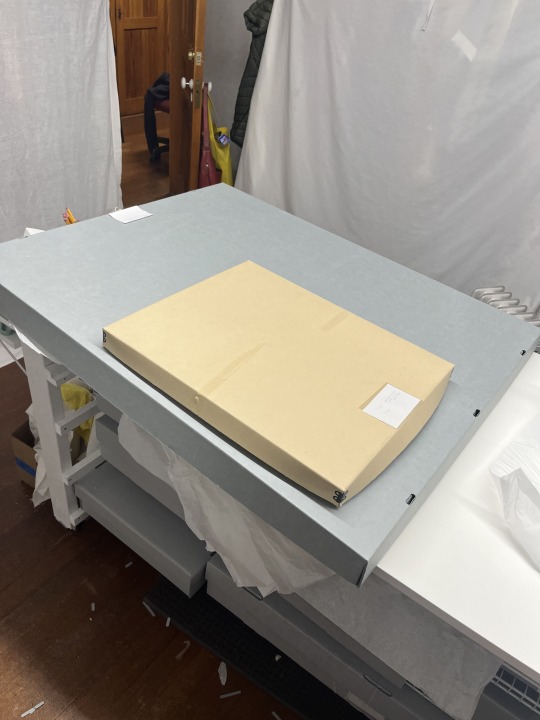
pictured above are two flag boxes - - the former, and the updated storage for a flag!
The (I am unsure of the exact dimensions but a bit bigger than 3x5 ft) flag was creased, crumpled, folded, and shoved into the tiny box a number of years ago. As we have been slowly working through out textiles collection, we came across it and immediately recognized its need for better storage.
when working to update and improve the storage for a flag, it is important to fold the flag in new places (with padding!!), to not further the harm that a crease will create over time
so happy that this flag has a new home !!
#history#historical society#museum curator#local history#museum life#east coast#museums#museum studies#antiques#flag#civil war#military history#flag history#conservation#historical preservation#preservation#textile#archive#archival storage#flags
20 notes
·
View notes
Text


gertrude vanderbilt’s childhood bedroom, newport rhode island (my pics)
#Gertrude Vanderbilt#vanderbilt family#the breakers#Newport#rhode island#pink#interior design#vintage interiors#wallpaper#vintage interior design#victorian architecture#victorian era#victorian aesthetic#victorian interiors#roses#vintage furniture#historical bedroom#bedroom#antique#antique furniture#historical preservation#ah fuck it I’ll tag it#coquette#my posts
8 notes
·
View notes
Note
VAMP ROGER AU QUESTION! how would he and barnabas interact together (if they ever interact)? :3 💜
tagging @tortoisesshells because she's my co-conspirator <3
excellent question! this family and their sharp-toothed men will be the death of ... well, several community members of Collinsport, i suppose.
to start — Barnabas gets out of the box slightly differently than in canon, which colors his relationship to Roger and the rest of the household. Roger kills Willie after his attempted assault on Carolyn and Vicki (who is, by that point, his wife); Willie's mysterious disappearance and Roger's suspected involvement makes Jason that much more panicked, desperate, and correspondingly aggressive. Liz goes searching for the lost family jewels in a last-ditch attempt to buy Jason off, and, inadvertently, lets their ancient family sin out of the tomb.
ergo she's made Barnabas' thrall instead of Willie, but this goes unnoticed for a while — even though her brother would, in theory, recognize the signs, and his suspicions are raised, but she's already acting so much unlike herself with Jason around that he doesn't suspect anyone else of doing her harm. yet.
at the start, he and Barnabas get along very well, even before they discover their shared affliction: they're both relatively sophisticated, well-traveled, intelligent people, and for all that Roger decries Liz's emphasis on the Collins name, he leans towards familial connections instinctively (Roger hasn't got much in the way of friends outside of the house even in canon, and he's even more isolated as a vampire).
after he finds out Barnabas is also a vampire, things get a little more complicated, but overall, they're still friendly. Roger doesn't have much sympathy for Barnabas' relentless self-pity and decrying his doomed fate to live as a monster, because Roger on the whole enjoys his vampirism and has made a decent un-life for himself out of it (thanks in no small part to Vicki). but having someone like him around is a comfort in ways he wouldn't have expected, he's no longer solitary or uniquely monstrous out of the Collins family, he has someone else around through the night, and someone who understands the sufferings of bloodthirst and being shut out of the sun.
furthermore, Roger's very much interested in his family history and stories of the past, the building of Collinwood, Jeremiah's ships – and Barnabas was there. there's potential for some very interesting conversations about the past, and the arc of the Collins family history to the present, not to mention literature, travel, fashion, politics and the rest. Roger's his cousin's mirror in modernity in many ways, and that's something potentially interesting to explore: the world changes around them, but Collinses do not.
as an aside, they both have a funny sort of relationship to Burke. Barnabas hates him for his resemblance to Jeremiah and envies his friendship with Vicki and thinks he's crude, and Roger ... well. it's complicated. it's closer to antagonism than not, and Burke has tried to kill him once in this au, and Roger resents his flirting with Vicki, but then there's everything else with their past. so I don't think Barnabas' treatment of him would sit particularly well with Roger, he'd take the attitude of hey, only I can be a dick to Burke >:(
the definite fracture point is Barnabas imprinting on Vicki. Roger's already jealous and possessive by nature, and it's amplified by the supernatural nature of his relationship to Vicki (being closer, bodily and mentally; being necessary to each other; being, quite literally, sustenance) so he's already a little on edge when Barnabas starts paying attention to her, giving her presents, and appreciating the scenery — Barnabas doesn't, exactly, tend to have much in the way of moral inclination to leaving women alone when they have prior engagements, but it's fair to point out the irony of everything Roger was doing with his bloodbag governess when he was still very much a married man.
anyway: Roger finds foreign bite marks on his wife's neck, and he's understandably immensely upset by this. partially out of territorial sentiment, but he also knows Vicki, and he knows that she wouldn't have invited another vampire willingly — which means that she was forced, or hypnotized, or attacked in secret, and there's only the one potential suspect. this is already enough to lose his good will, but he might have been willing to let Barnabas go with a "hands off," had this discovery not lead to finding out what he'd also been doing to Liz. the combination of the two is unforgivable, and it's Barnabas' error to have made an enemy who is very personally aware of all his vampiric weaknesses, and Burke's already carved a stake.
#THANK YOUUUU for the question :D i love talking about this au kskfgd#devilagent#vamp roger au tbt#➤ answered. ┊ Collinsport 4099.#i do think the barnabas and roger relationship is an interesting one even though there's not much going on there in canon.#(canonically speaking roger is just sort of... there? even during cassandra he doesn't ever pity him for being a victim in the scheme;#it's grrr angelique is here messing with *Me* again. who cares about my oblivious dumb blonde cousin)#but there's a lot of parallels going on there which I never shut up about: the way that roger will drain life from a man#to preserve his own; or manipulate and throw others (vicki) under the bus;#or makes david (not biologically in human reproduction) into a monster just like him — forming him and burke in his image.#roger is Modern in ways that barnabas is not — the sports cars; the en vogue suits and turtlenecks; his flippant relationship with his vows#and his (relatively speaking) more-or-less open queerness.#but he's also a creature out of the past; an antiquated speaking pattern; an embrace of old family stories (particularly tragedies);#not to mention he plays the role of a byronic hero practically straight out of the novel just without any sideburns.#roger simultaneously wishes to be free of that family root system; but falls back on it in desperation because it's only because his#ancestry and family wealth and power exists that *he* exists at all.#and in the same way that joshua cannot shoot barnabas for becoming a monster; neither can liz condemn her brother for his manslaughter#(or david for patricide)#but even though they don't die; they are exiled — to the tomb; to augusta — and return as mere shadowed and monstrous versions#of their former selves.#many of the differences between vamp roger and barnabas I think can be partially explained by: roger did not have the 150 year gap between#being turned and coming back; he returns to essentially the same world he knew just ten years ago#and; two; that roger has his great yearning love *after* he's turned; and not before.#there's nothing about his life with laura and david that he particularly mourns or wishes to recreate.#and; as already noted; roger has vicki — who serves as necromancer;#which... I suppose parallels julia; in an odd way.
6 notes
·
View notes
Text
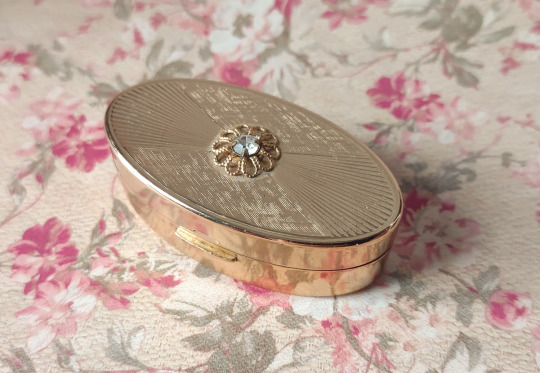


antiques seem to be tumblr's trend of the day, so i am making Everyone look at this gorgeous old max factor lipstick i bought Sunday. there's still lipstick in the tube
#antiques#max factor#1950s#vintage#makeup#cosmetics#history#antique makeup#liz blogs#i will not use the lipstick because it probably has fucking asbestos in it. but it's in there#i follow an antique beauty youtuber and she has a huge collection of vintage makeups#so i recognized this style as Very old. and max factor Definitely doesn't exist anymore. ... I Think#im p sure it got absorbed into another company#i almost want to find a lipstick that will fit in this little case and carry it with me when i have makeup on#but this is much too gorgeous to risk getting dinged up in my purse#it belongs on a shelf for preservation#it's in such good condition for being 70 years old
64 notes
·
View notes
Text
Classic Cars That Still Turn Heads
In a world dominated by cutting-edge technology and futuristic designs, there remains a special place in our hearts for classic cars that still turn heads. These timeless vehicles, with their elegant lines, iconic styling, and storied histories, continue to captivate car enthusiasts and casual observers alike. From the roar of a vintage engine to the sleek curves of a bygone era, classic cars…
#American muscle cars#Antique Cars#automotive art#automotive engineering#Automotive History#automotive masterpieces#automotive trends#car appreciation#car auctions#Car Collectors#car craftsmanship#car design#car enthusiasts#car history#Car Passion#Car Preservation#car restoration#car shows#Chevrolet Bel Air#chrome accents#classic car beauty#classic car investment#classic car maintenance#classic car market#classic car value#Classic Cars#Corvette Stingray#cultural impact#cultural symbols#Dodge Charger
2 notes
·
View notes
Text

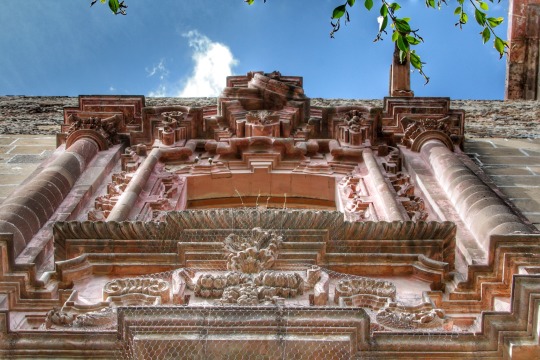

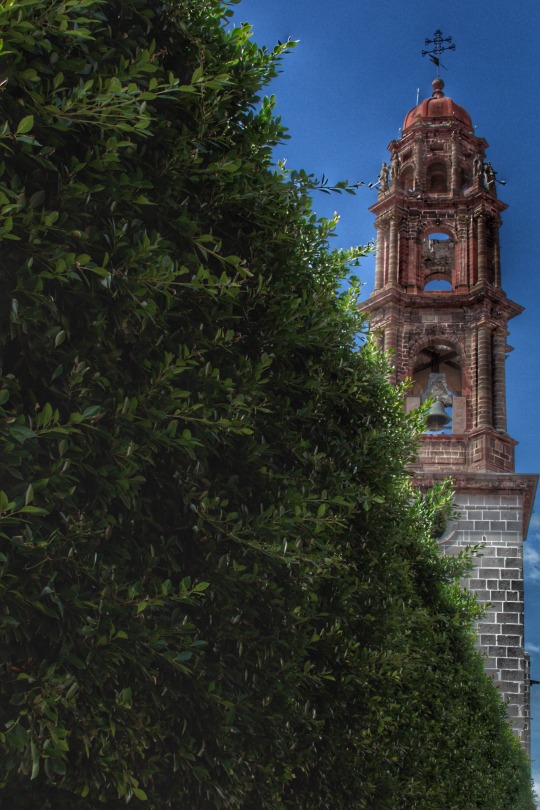
#san miguel de allende#méxico#pphr#churches#antique churches#historic preservation#historic places#iglesias#iglesia
6 notes
·
View notes
Text
the Unity thing reminds me of what Photobucket did years ago. For you youngins, Photobucket was a free image-hosting site back during a time when online forums didn't let you upload images directly onto your posts, you had to use a 3rd party site and then link to your image.
Photobucket wasnt even the only site who offered free image hosting, but after a while they decided to change to a RIDICULOUSLY EXPENSIVE subscription service (im talking $1,000 a year) for hosting images.
That ended up kindof being the last kick in the pants that pushed forum sites to just host images themselves. However there's still a large chunk of old online information that was simply lost because all the images were deleted by Photobucket.
#one of my first paid jobs was to convert thousands of images from a antique car site#the pictures gave step-by-step instructions on how to fix and upkeep these vehicles#not something im interested in but i understood how important is was to preserve that information
16 notes
·
View notes
Text
Author & Timestamp: Tomas Weber for Scientific American March 19, 2024 (over a month old as of May 3, 2024)
Note: This article contains what I perceive to be dismissiveness of peoples' concerns about AI's impact on modern life. Perhaps I've misinterpreted that, but wanted to give a heads up for anyone reading the full text (17 min read).
Note: I did not include anything that ties to the 'inside story' or the specific scroll in question, I've simply pulled out useful background information elements.
Extract:
For four centuries monks and princes, papyrologists and archaeologists, classicists and computer scientists have struggled [...] to detect any letters or words inside the scrolls [...] without destroying them in the process. If we could read them, as classicists and papyrologists have long hoped to do, we might discover lost works of classical literature or philosophy or records of history and science. Perhaps [...] tragedies by Sophocles or Aeschylus or the lost writings of Livy. “The possibilities,” says David Blank, a professor of classics at the University of California, Los Angeles, “are enormous.”
Almost all classical literature has come down to us from medieval monks, choosy in what they resolved to copy. As a result, relatively little “original” writing from antiquity exists [...]. We have seven plays by Aeschylus, but we know the tragedian wrote at least 10 times more than that. The preserved papyri in Herculaneum are our best shot at rescuing lost works, and some classicists suspect that even more texts could remain in areas of the villa yet to be excavated.
[...] In addition to works by [...] the poets Virgil and Horace, there’s also [a chance] of finding writing from authors [not currently known to modern scholars].
[...]
[...] If the technological advances continue and [are used to read other] unopened scrolls, says Tobias Reinhardt, a classics scholar at the University of Oxford [...], “we could see a recovery of ancient texts at a volume not seen since the Renaissance.”
[...]
[This] technology [...] could be adapted for deciphering other lost texts [...] In 1993, 140 carbonized papyrus scrolls dating from the sixth century C.E. were discovered in a Byzantine church in Petra, Jordan. Blackened and fragile, they were considered unreadable. And tens of thousands of fragments of the Dead Sea Scrolls have never been read because so many are stuck together.
[...]
Ancient Egyptian mummy masks were also made of papyrus, arranged in layers coated with plaster—a material called cartonnage, essentially a kind of papier-mâché. That papyrus often contained writing, which has been difficult to decipher without destroying the plaster.
[...]
In the fourth century B.C.E. Greek historian Xenophon noted on his return from Mesopotamia that there was a bustling trade in scrolls across the Black Sea. This means there are almost certainly sunken ships on the seafloor that contain boxes of papyrus rolls, according to Richard Janko, a classics professor and papyrologist at the University of Michigan. These scrolls are probably still preserved in this sea, which has exceptionally low oxygen and salinity for a marine environment.
[...]

Hundreds of papyrus scrolls in the ancient city of Herculaneum were preserved after the eruption of Mount Vesuvius. For thousands of years, no one could open them without doing irreparable damage.
Credit: Courtesy of EduceLab/University of Kentucky

High-energy scans allow scientists to virtually unwrap the scrolls into 3-D images, so that AI tools can be applied to look for invisible patterns in the ink.
Credit: Courtesy of EduceLab/University of Kentucky

Credit: Matthew Twombly; Christy Chapman/University of Kentucky and Stephen Parsons/Vesuvius Challenge (consultants); Amanda T. Hobbs (background research)
/end of extract
#extract of longer read#papyri#older news#scientific american#article#extract#archaeology#classical studies#history#ancient history#antiquity#ancient#archaeological discoveries#ai#artificial intelligence#classical antiquity#ai technology#scrolls#fragments#papyrus#papyrology#classical literature#preserved papyri#ancient greek#ancient greece#ancient rome#ancient egypt#carbonized papyrus#classics#practicing snipping out superfluous text
3 notes
·
View notes
Text
Malcesine: Enchantment Between Lake and Mountain
Nestled between the crystal-clear waters of Lake Garda and the imposing peaks of Monte Baldo, Malcesine captivates visitors with its timeless beauty. This medieval town, with its cobblestone streets, ancient buildings, and breathtaking views, offers a perfect mix of history, nature, and culture. A Journey Through History The historical heart of Malcesine is dominated by the Scaliger Castle, a…

View On WordPress
#adventure#air quality improvement#antiques#architecture#Art#biking#biodiversity#biodiversity preservation#birdwatching#botanicalgardens#budgettravel#cafes#camping#carbon footprint reduction#castles#clean energy#climate action#climatechange#conservation#conservation efforts#conservation technology#craftsmanship#culture#drawing#eco-awareness#eco-conscious choices#eco-conscious living#eco-friendly#eco-friendly alternatives#eco-friendly habits
2 notes
·
View notes
Text
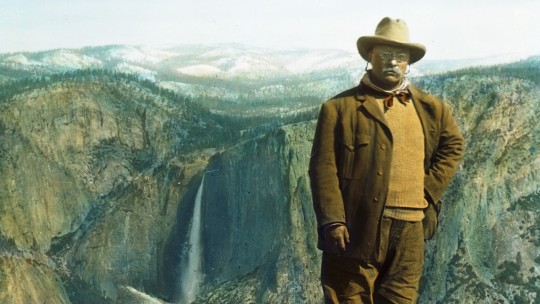
LETTERS FROM AN AMERICAN
April 7, 2024 (Sunday)
HEATHER COX RICHARDSON
APR 08, 2024
In August 1870 a U.S. exploring expedition headed out from Montana toward the Yellowstone River into land the U.S. government had recognized as belonging to different Indigenous tribes.
By October the men had reached the Yellowstone, where they reported they had “found abundance of game and trout, hot springs of five or six different kinds…basaltic columns of enormous size” and a waterfall that must, they wrote, “be in form, color and surroundings one of the most glorious objects on the American Continent.” On the strength of their widely reprinted reports, the secretary of the interior sent out an official surveying team under geologist Ferdinand V. Hayden. With it went photographer William Henry Jackson and fine artist Thomas Moran.
Banker and railroad baron Jay Cooke had arranged for Moran to join the expedition. In 1871 the popular Scribner’s Monthly published the surveyor’s report along with Moran’s drawings and a promise that Cooke’s Northern Pacific Railroad would soon lay tracks to enable tourists to see the great natural wonders of the West.
But by 1871, Americans had begun to turn against the railroads, seeing them as big businesses monopolizing American resources at the expense of ordinary Americans. When Hayden called on Congress to pass a law setting the area around Yellowstone aside as a public park, two Republicans—Senator Samuel Pomeroy of Kansas and Delegate William H. Clagett of Montana—introduced bills to protect Yellowstone in a natural state and provide against “wanton destruction of the fish and game…or destruction for the purposes of merchandise or profit.”
The House Committee on Public Lands praised Yellowstone Valley’s beauty and warned that “persons are now waiting for the spring…to enter in and take possession of these remarkable curiosities, to make merchandise of these bountiful specimens, to fence in these rare wonders so as to charge visitors a fee, as is now done at Niagara Falls, for the sight of that which ought to be as free as the air or water.” It warned that “the vandals who are now waiting to enter into this wonderland will, in a single season, despoil, beyond recovery, these remarkable curiosities which have required all the cunning skill of nature thousands of years to prepare.”
The New York Times got behind the idea that saving Yellowstone for the people was the responsibility of the federal government, saying that if businesses “should be strictly shut out, it will remain a place which we can proudly show to the benighted European as a proof of what nature—under a republican form of government—can accomplish in the great West.”
On March 1, 1872, President U. S. Grant, a Republican, signed the bill making Yellowstone a national park.
The impulse to protect natural resources from those who would plunder them for profit expanded 18 years later, when the federal government stepped in to protect Yosemite. In June 1864, Congress had passed and President Abraham Lincoln signed a law giving to the state of California the Yosemite Valley and nearby Mariposa Big Tree Grove “upon the express conditions that the premises shall be held for public use, resort and recreation.”
But by 1890 it was clear that under state management the property had been largely turned over to timber companies, sheep-herding enterprises, and tourist businesses with state contracts. Naturalist John Muir warned in the Century magazine: “Ax and plow, hogs and horses, have long been and are still busy in Yosemite’s gardens and groves. All that is accessible and destructible is rapidly being destroyed.” Congress passed a law making the land around the state property in Yosemite a national park area, and the United States military began to manage the area.
The next year, in March 1891, Congress gave the president power to “set apart and reserve…as public reservations” land that bore at least some timber, whether or not that timber was of any commercial value. Under this General Revision Act, also known as the Forest Reserve Act, Republican president Benjamin Harrison set aside timber land adjacent to Yellowstone National Park and south of Yosemite National Park. By September 1893, about 17 million acres of land had been put into forest reserves. Those who objected to this policy, according to Century, were “men [who] wish to get at it and make it earn something for them.”
Presidents of both parties continued to protect American lands, but in the late nineteenth century it was New York Republican politician Theodore Roosevelt who most dramatically expanded the effort to keep western lands from the hands of those who wanted only their timber and minerals.
Roosevelt was concerned that moneygrubbing was eroding the character of the nation, and he believed that western land nurtured the independence and community that he worried was disappearing in the East. During his presidency, which stretched from 1901 to 1909, Roosevelt protected 141 million acres of forest and established five new national parks.
More powerfully, he used the 1906 Antiquities Act, which Congress had passed to stop the looting and sale of Indigenous objects and sites, to protect land. The Antiquities Act allowed presidents to protect areas of historic, cultural, or scientific interest. Before the law was a year old, Roosevelt had created four national monuments: Devils Tower in Wyoming, El Morro in New Mexico, and Montezuma Castle and Petrified Forest in Arizona.
In 1908, Roosevelt used the Antiquities Act to protect the Grand Canyon.
Since then, presidents of both parties have protected American lands. President Jimmy Carter rivaled Roosevelt’s protection of land when he protected more than 100 million acres in Alaska from oil development. Carter’s secretary of the interior, Cecil D. Andrus, saw himself as a practical man trying to balance the needs of business and environmental needs but seemed to think business interests had become too powerful: “The domination of the department by mining, oil, timber, grazing and other interests is over.”
In fact, the fight over the public lands was not ending; it was entering a new phase. Since the 1980s, Republicans have pushed to reopen public lands to resource development, maintaining even today that Democrats have hampered oil production although it is currently, under President Joe Biden, at an all-time high.
The push to return public lands to private hands got stronger under former president Donald Trump. On April 26, 2017, Trump signed an executive order—Executive Order 13792—directing his secretary of the interior, Ryan Zinke, to review designations of 22 national monuments greater than 100,000 acres, made since 1996. He then ordered the largest national monument reduction in U.S. history, slashing the size of Utah’s Bears Ears National Monument by 85%—a goal of uranium-mining interests—and that of Utah’s Escalante–Grand Staircase by about half, favoring coal interests.
“No one better values the splendor of Utah more than you do,” Trump told cheering supporters. “And no one knows better how to use it.”
In March 2021, shortly after he took office, President Biden announced a new initiative to protect 30% of U.S. land, fresh water, and oceans areas by 2030, a plan popularly known as 30 by 30. Also in March 2021, Supreme Court chief justice John Roberts urged opponents of land protection to push back against the Antiquities Act, saying the broad protection of lands presidents have established under it is an abuse of power.
In October 2021, President Biden restored Bears Ears and Escalante–Grand Staircase to their original size. “Today’s announcement is not just about national monuments,” Interior Secretary Deb Haaland, a member of the Laguna Pueblo in New Mexico, said at the ceremony. “It’s about this administration centering the voices of Indigenous people and affirming the shared stewardship of this landscape with tribal nations.”
In 2022, nearly 312 million people visited the country’s national parks and monuments, supporting 378,400 jobs and spending $23.9 billion in communities within 60 miles of a park. This amounted to a $50.3 billion benefit to the nation’s economy.
But the struggle over the use of public lands continues, and now the Republicans are standing on the opposite side from their position of a century ago. Project 2025, the blueprint for a second Trump presidency, demands significant increases in drilling for oil and gas. That will require removing land from federal protection and opening it to private development. As Roberts urged, Project 2025 promises to seek a Supreme Court ruling to permit the president to reduce the size of national monuments. But it takes that advice even further.
It says a second Trump administration “must seek repeal of the Antiquities Act of 1906.”
LETTERS FROM AN AMERICAN
HEATHER COX RICHARDSON
#Letters From An American#Heather Cox Richardson#public lands#the Antiquities Act of 1906#history#Department of the interior#tribal nations#Teddy Roosevelt#conservation#conservatism#preservation
12 notes
·
View notes
